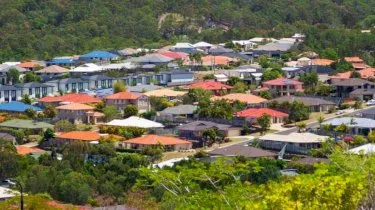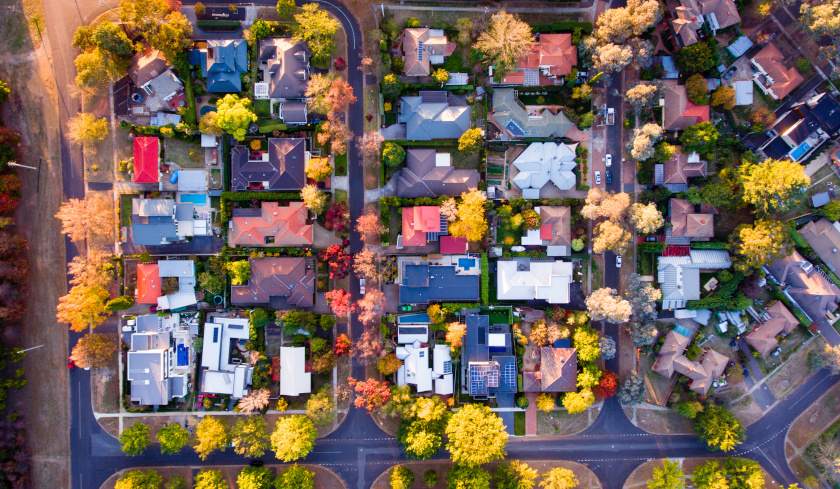Invest
What’s in store for property in 2022?
House prices have continued to rise throughout 2021; however, this trend could be set to end due to expectations that the Reserve Bank could lift interest rates sooner than anticipated.
What’s in store for property in 2022?
House prices have continued to rise throughout 2021; however, this trend could be set to end due to expectations that the Reserve Bank could lift interest rates sooner than anticipated.

National property prices rose again in October, moving up 1.5 per cent for the month and up 21.6 per cent compared to a year ago, according to data from CoreLogic.
However, the rate of growth has slowed in recent months due to worsening affordability, rising supply and stimulus reduction, while longer-term risks such as rising interest rates continue to mount.
“The trajectory of interest rates will be a central factor in the housing market’s performance over the medium to longer-term,” said CoreLogic research director Tim Lawless.
“Higher interest rates have typically been an inflection point for housing markets, with a lift in rates generally corresponding with less growth in housing values or the commencement of a downturn.”

Mr Lawless said that prices are still expected to rise over the short term, however, at a slower rate than in the past year.
Similarly, AMP Capital chief economist Dr Shane Oliver expects gains to continue to slow into next year ahead of subdued growth in 2023.
Dr Oliver has forecasted that the RBA would raise interest rates to 0.25 per cent in November next year and to 0.5 per cent in December, acting as a “big dampener” on the property market.
“The collapse in fixed rates to 2 per cent or less played a big role in the recent boom in prices, and fixed mortgages have accounted for 40 per cent or so of new loans recently, so are far more significant than they used to be,” he said.
Banks have already begun increasing some fixed mortgage rates, and further increases for 2- and 3-year fixed rates are seen as being likely after the RBA ended its 0.1 per cent yield target on the April 2024 government bond this week.
“Interest rates are shifting from a tailwind to a headwind for Australian housing demand,” said Dr Oliver.
“Property demand tends to be more geared than demand for shares leaving the property market sensitive to interest rate moves.”
Rates not the only worry
Other “storm clouds” for the property market highlighted by Dr Oliver include a rise in listings, poor affordability, a rotation in consumer spending back towards services and slower borrowing due to APRA’s serviceability buffer increase, as well as the likelihood of further macro-prudential measures in the future.
AMP Capital predicted average dwelling prices in the capital cities will rise 5 per cent in 2022, down from its previous forecast of 7 per cent, while a decline between 5 and 10 per cent is expected in 2023.
The Commonwealth Bank is also anticipating interest rate rises in November and December next year.
The bank said mortgage rates, particularly fixed rates, could move higher ahead of an increase to the cash rate, but only “small lifts” to fixed rates have been recorded to date.
CBA senior economist Belinda Allen said that national dwelling prices were now expected to increase by 7 per cent in 2022 but noted that this is contingent on APRA not enacting further policy changes.
“Additional changes cannot be ruled out, but given the changing interest rate dynamics and signs of slowing momentum in prices and lending, there are no guarantees more changes will be implemented,” Ms Allen said.
NAB is forecasting the first interest rate rise to occur in mid-2023 and previously predicted a 4.9 per cent increase for dwelling prices in 2022.
Westpac expects the first rate rise to take place in February 2023, while ANZ has forecast a rise in the second half of 2023.
Parliamentary inquiry
A parliamentary inquiry into housing affordability and supply commenced in August with the aim of examining the impact of taxes, charges and regulatory settings at a federal, state and local government level on housing supply.
“As data provided by the Reserve Bank of Australia, the Treasury and the Australian Bureau of Statistics shows, home ownership, one of the building blocks of Australian society, has been falling for the last 30 years,” said Liberal MP Jason Falinski, the chair of the inquiry.
“In my view, this represents an urgent moral call for action by governments of all levels to restore the Australian dream for this generation and the ones that follow.”
The inquiry will also identify and assess the factors that promote or impede responsive housing supply and examine initiatives used to improve housing supply in other jurisdictions and how they might be applied in Australia.
Customer Owned Banking Association (COBA) CEO Michael Lawrence told a public hearing this week that all levels of government were responsible for tackling housing affordability, with the “biggest lever” available to governments being to boost supply.
“We would like to see more cohesive policies, better coordination and greater accountability for improving the supply of housing,” said Mr Lawrence.
“This should involve clear goals and timelines about the removal of impediments to the supply of reasonably priced housing, with a focus on planning and zoning restrictions and the provision of infrastructure.”

Property
North platform adds household reporting feature to boost adviser efficiency
AMP's North platform has launched consolidated household reporting across multiple client accounts, helping financial advisers streamline their client review processes. Read more

Property
What Adds The Most Value To Properties?
Wondering how to up the value of your property? Properties are worth a lot of money in general, but there’s always a way to maximise value. The good news is that most of the things you can do to ...Read more

Property
Centuria reports strong growth in alternative real estate sectors for FY24
Centuria Capital Group has reported significant growth in alternative real estate sectors for the 2024 financial year, driving stable performance and increased guidance for FY25. Read more

Property
How to leverage equity in your home for investment or renovation
Home equity, the value of your property minus any debts owed, is a powerful financial resource many homeowners in Australia can utilize to further their financial goals. Whether you're looking to ...Read more

Property
Exploring REITs: Real estate investment without buying property
Real Estate Investment Trusts (REITs) offer a compelling investment alternative for those interested in the real estate market but may not want to endure the complexities and capital requirements of ...Read more

Property
Retirement communities: a pivotal element in meeting Australia's housing targets
The Retirement Living Council (RLC) has recommended that retirement communities should be considered a vital part in the Australian Government's initiative to fulfill the Housing Australia Future Fund ...Read more

Property
Australians adjust financial strategies amid changing property market dynamics
The 2023 calendar year saw Australian borrowers acquiring a total of $300.9 billion in new loans for property purchases, marking a 12.7% decrease from the previous year. Read more

Property
Split home loans unlocking doors for Aussie buyers
Australians are teaming up to dive into the real estate market and seize the advantages of home ownership, with the trend of split home loans surging as family and friends unite to buy properties ...Read more

Property
North platform adds household reporting feature to boost adviser efficiency
AMP's North platform has launched consolidated household reporting across multiple client accounts, helping financial advisers streamline their client review processes. Read more

Property
What Adds The Most Value To Properties?
Wondering how to up the value of your property? Properties are worth a lot of money in general, but there’s always a way to maximise value. The good news is that most of the things you can do to ...Read more

Property
Centuria reports strong growth in alternative real estate sectors for FY24
Centuria Capital Group has reported significant growth in alternative real estate sectors for the 2024 financial year, driving stable performance and increased guidance for FY25. Read more

Property
How to leverage equity in your home for investment or renovation
Home equity, the value of your property minus any debts owed, is a powerful financial resource many homeowners in Australia can utilize to further their financial goals. Whether you're looking to ...Read more

Property
Exploring REITs: Real estate investment without buying property
Real Estate Investment Trusts (REITs) offer a compelling investment alternative for those interested in the real estate market but may not want to endure the complexities and capital requirements of ...Read more

Property
Retirement communities: a pivotal element in meeting Australia's housing targets
The Retirement Living Council (RLC) has recommended that retirement communities should be considered a vital part in the Australian Government's initiative to fulfill the Housing Australia Future Fund ...Read more

Property
Australians adjust financial strategies amid changing property market dynamics
The 2023 calendar year saw Australian borrowers acquiring a total of $300.9 billion in new loans for property purchases, marking a 12.7% decrease from the previous year. Read more

Property
Split home loans unlocking doors for Aussie buyers
Australians are teaming up to dive into the real estate market and seize the advantages of home ownership, with the trend of split home loans surging as family and friends unite to buy properties ...Read more








